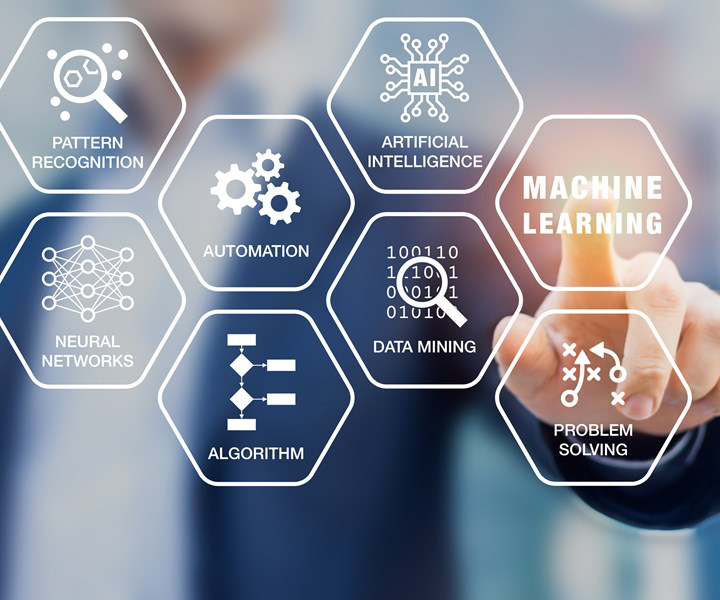2019/08/30 14:00 | Pageview:1744 | From: Modern Machine Shop

The hope of applying AI to manufacturing is still in its early stages, and one of the first steps is just to figure out what the one might mean for the other. Take CNC machining as an example, the following comes 10 takeways that might be related to the promise of AI assisting machining:
1. AI is not new, but it is current new because of large data sets and the power to process them.
An expert from North Carolina State University explained this point. AI needs data. Today, we not only have increasingly cheap and effective sensors for gathering data, but also have graphics processing units (GPUs) for rapid calculation. The expert says the Big Bang moment for contemporary AI came in 2009, when a deep learning network (see next point) was trained using an Nvidia GPU.
2. In manufacturing, AI generally refers to machine learning and the current mainstream is deep learning.
Unlike automation, in which the response to any input is anticipated and programmed, machine learning involves automatically seeking patterns in data through large-scale calculation in order to self-select appropriate responses. Deep learning is a category of machine learning that goes, well, deeper. Machine learning parses data using algorithms that directly need human guidance. But deep learning structures algorithms in layers, creating a learning system in which the findings at one layer advance and improve the decision-making power of another layer.
3. Just the terminology is tough.
PhD professors at the CSAM meeting struggle with their uncertainty over whether they were correctly applying terms such as machine learning, deep learning and neural networks. People feel no shame if a mathematician says a definition in the preceding paragraph fall short in some way.
4. A weakness of machine learning is its lack of explanatory power.
Machine learning finds correlations, not explanations, and correlation does not always imply cause and effect. An expert of Fayetteville State University explained how a potential vulnerability of machine learning is in the way it "makes spurious conclusions look deceptively good." Thus, the expert explained how the application of AI to machining research at UNCC has involved a hybrid approach in which programming based on the physical understanding of the system guides the data learning from the outset.
5. AI reveals the importance and true nature of metrology.
We tend to think of measurement and inspection as simply the judge of the process, sizing up a feature to see whether it passes or fails. But metrology’s greater power is in process control, not quality assurance. AI needs data, and metrology is the science of converting manufacturing events and outcomes into data.
6. With AI, we will discover cause-and-effect relationships we have never seen before.
This point is the flip side of point 4. AI cannot give us explanations, but it will reveal phenomena that deserve explanation. One realm in which people are aware that this is happening is additive manufacturing (AM). The variables affecting an additive build are numerous and the interrelationships among inputs and outputs are not well understood, so machine learning is being used to?more quickly discover?the powers of different parameters. Correlations will be found and used in AM before they are explained.
7. AI allows experiments that would not otherwise be possible.
In a panel discussion, an expert of ATI Specialty Materials?described the role of AI in materials development. Experimentation involving AI provides a way to, in a virtual sense, change just one microstructure property to investigate the effect while holding all other properties constant. Physical reality provides no way to do this.
8. Big organizations have an advantage.
No one stated this explicit point about AI, but it occurred as people listened to Dr. Jaydeep Karandikar of GE Global Research. He described the possibility of developing more sophisticated tool life predictions within GE by drawing information from every GE machined part. AI needs data, and big organizations potentially have a lot more data to marshal.
9. AI is an alternative to tribal knowledge.
A Dr. of Caterpillar sees promise in AI for workforce development. A wave of young new hires coming into manufacturing is producing a green workforce. In the absence of sufficient senior employees to guide them via tribal knowledge, he asks, "How do we augment the inexperienced worker?" AI is an answer, with its ability to learn and suggest correct responses in situations that otherwise might be too nuanced to be anticipated in programming or formal procedures.
10. Basic infrastructure is still needed.
What will it take to realize the full promise of AI in machining? A lot, but much of what is still needed is fundamental rather than elaborate. One expert identified this. "We need the right sensors on machines to get us the data we need," he says. Similarly, he pointed to the need for graphical interfaces for AI systems, so that these tools can be applied more easily instead of requiring coding.
